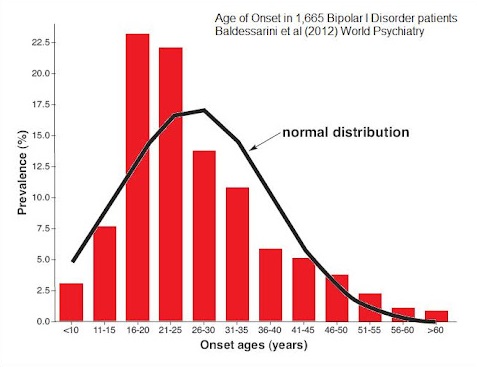Bipolar Disorder in Children - Key Statistics and Prevalence
TweetBipolar disorder, also known as manic-depressive illness, is a brain disorder that causes unusual shifts in mood, energy, activity levels, and the ability to carry out day-to-day tasks.
There are four basic types of bipolar disorder; all of them involve clear changes in mood, energy, and activity levels. These moods range from periods of extremely “up,” elated, and energized behavior (known as manic episodes) to very sad, “down,” or hopeless periods (known as depressive episodes). Less severe manic periods are known as hypomanic episodes.
- In 2014, younger people were more likely to have bipolar than older people - 3.4% of 16-24 year olds screened positive but only 0.4% of 65-74 year olds screened positive.
- Community studies estimate lifetime prevalence of bipolar spectrum disorders to be 0% to 3% among adolescents, depending on the assessment measure and the range of the spectrum considered (e.g. Bipolar II, Cyclothymia). Prevalence of child-onset bipolar is not well established due to debate about the appropriate definition of caseness among preadolescents.



Sometimes crying or laughing
are the only options left,
and laughing feels better right now.

Current Issue
 Self Help Leaflets Take the help of our self help leaflets or booklets. |
 The DG Magazine All about living with depression |












